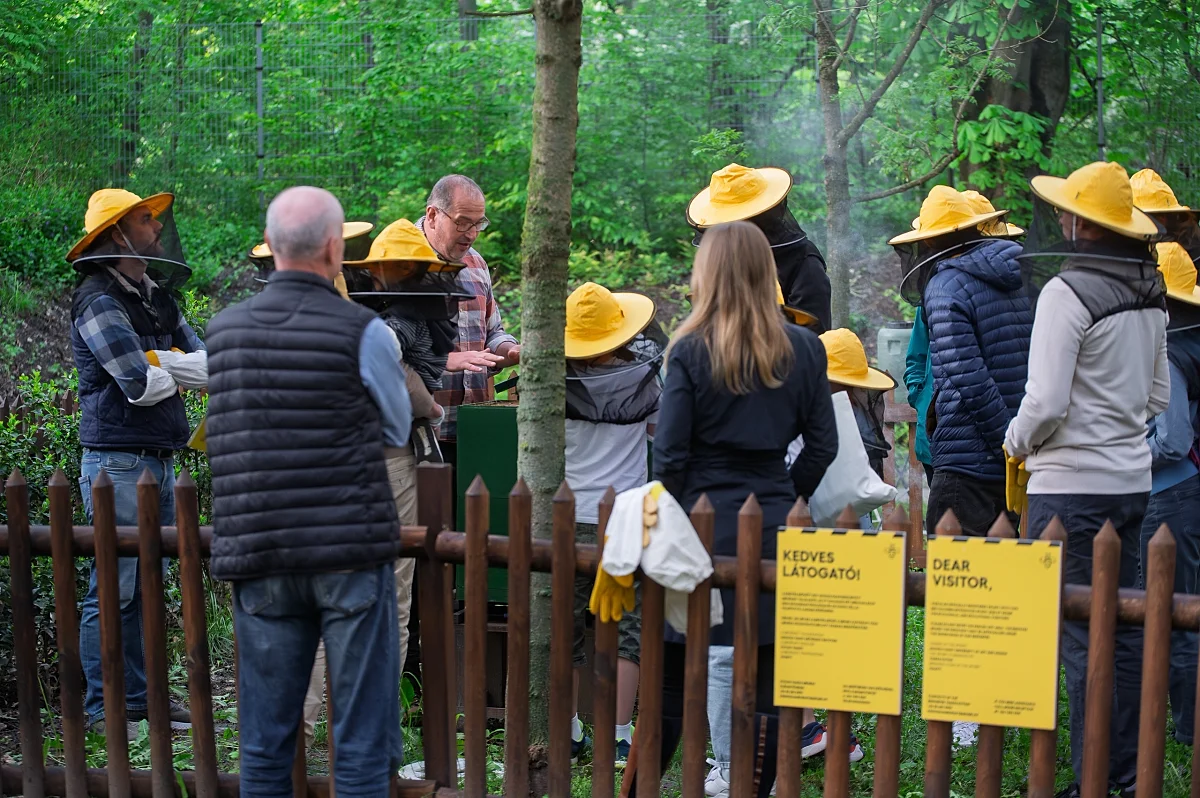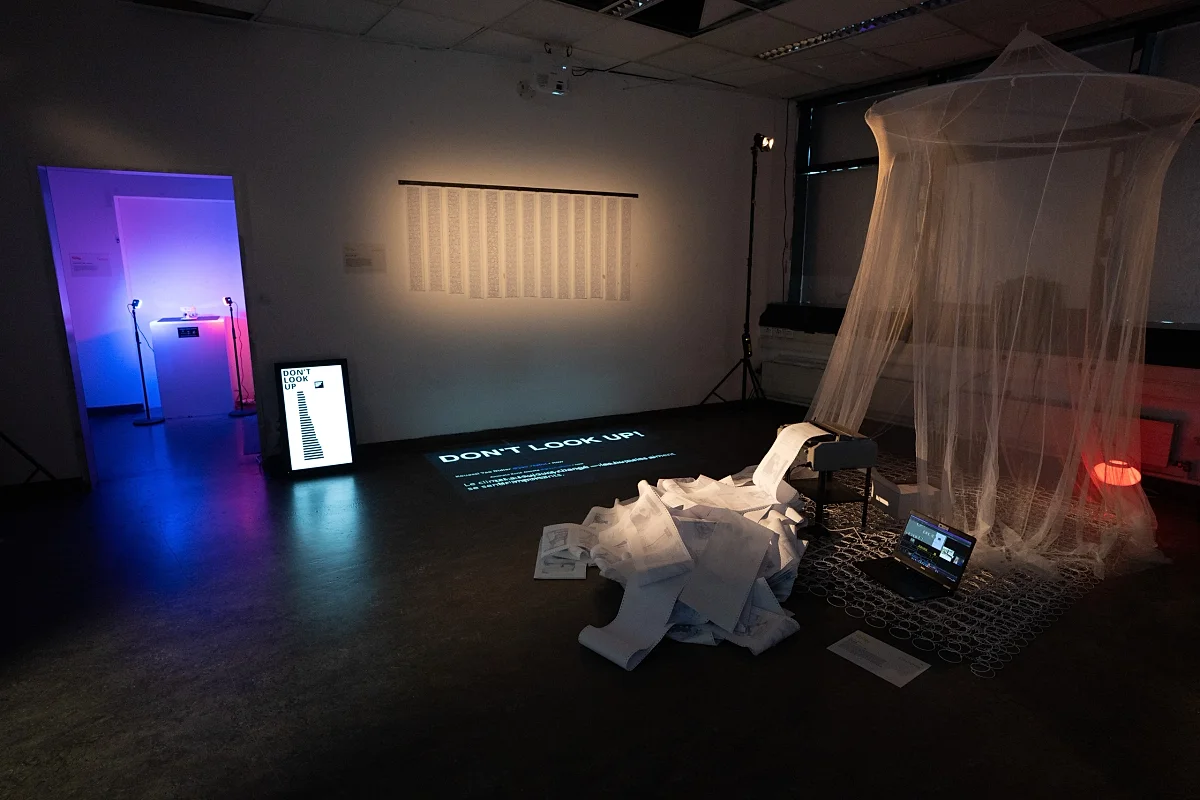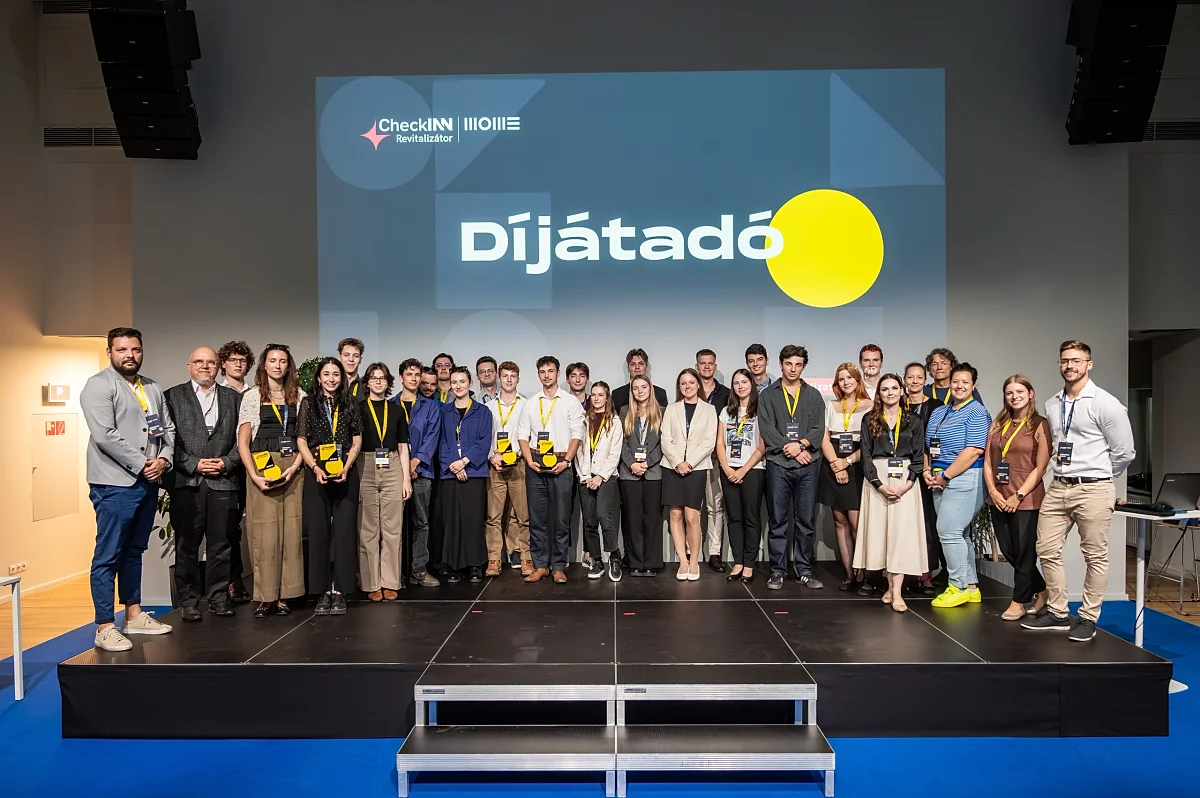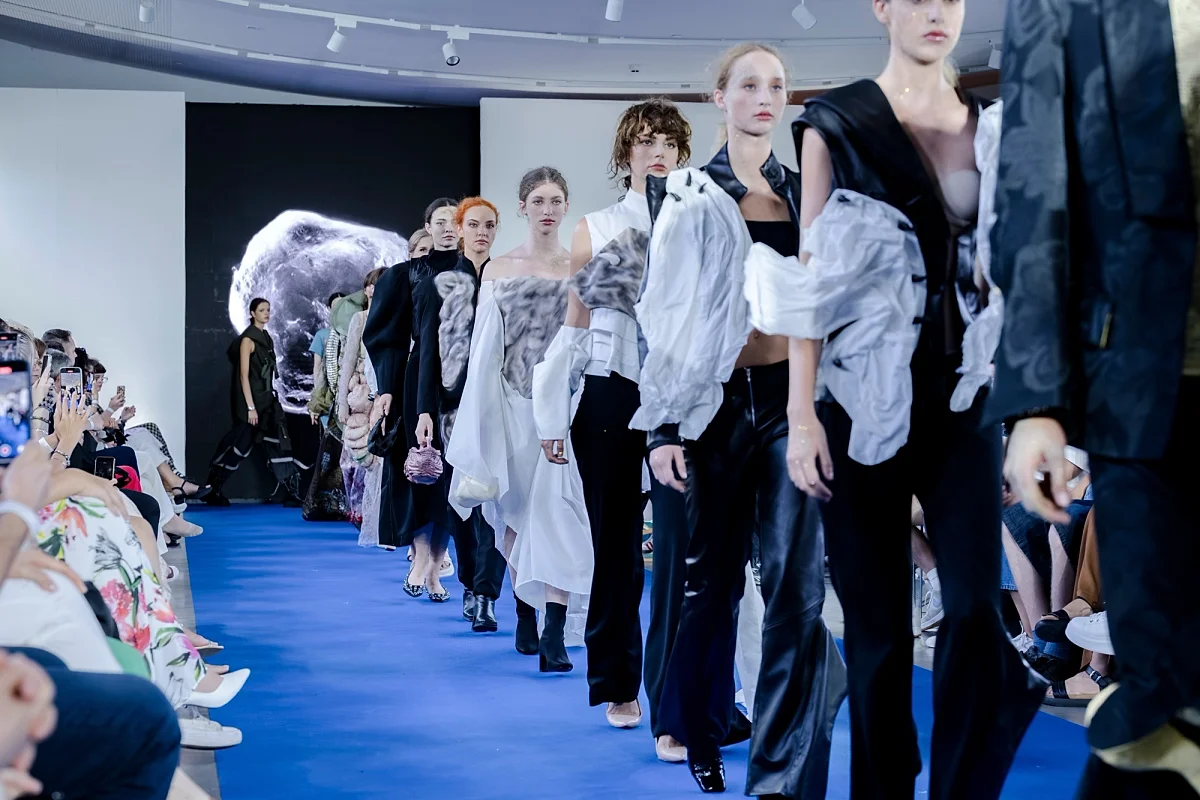
Pollinator Day at the MOME Campus
The event offered a fascinating insight into the ongoing pollinator-friendly initiative in the district, alongside the history of MOME's own apiary and MOMÉZ, MOME’s honey. Head of Cabinet of the MOME Foundation Eszter Sisák highlighted the university’s commitment to sustainability. She explained the motivation behind establishing MOME's beekeeping initiative and stressed that the goal wasn’t only to raise awareness but also to train students to incorporate sustainability into their design processes. MOME's beekeeper Tamás Kutasi shared intriguing facts about the lives of bees, including the impact of their winter decline, and how it has made it even more important to focus on the health and sustainability of each individual hive. For the more adventurous visitors, there was an exciting opportunity to suit up in protective gear and get a closer look at the hives.
Nóra Laki from the Hegyvidék Green Office underlined the event's aim to establish a lasting tradition, while research associate at the Lendület Ecosystem Services Research Group Viktor Szigeti spoke about the importance of maintaining nature-based habitats and the key tasks of observing plants and pollinators in the field. The discussion also touched on topics such as less frequent mowing, wildflower patches, and the Pollino project, introduced by MOME junior researcher Kitti Butter.
The Pollino initiative is an exciting blend of design, ecology, and urban planning, exploring how urban spaces can be transformed to meet the needs of pollinators, thus enhancing biodiversity and resilience in the local environment.
Conservation biologist András Máté (Wildflower World) focused on the role of native plants in urban areas. He shared a sobering fact: the decline in insect populations has not slowed in recent decades, highlighting the importance of continuing efforts to protect our natural world.
https://hegyvidek.hu/ugyintezes/zold-iroda/kedvezmenyes-beporzobarat


